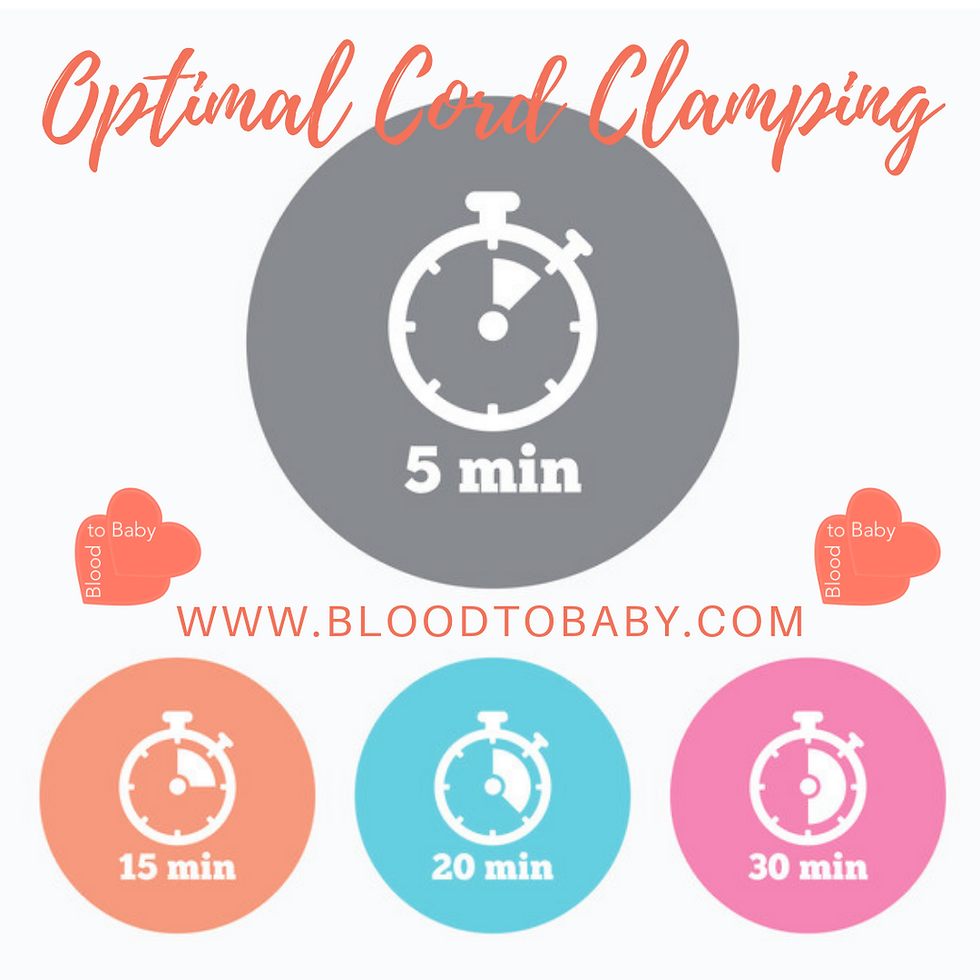We can't be bothered; Optimal Cord Clamping
- Hannah Tizard

- Mar 22, 2019
- 2 min read
Updated: Mar 23, 2019
I hear regularly from students and midwives that I meet on my travels that there remains a resistance in practice towards optimal cord clamping. Whilst I also want to recognise the exceptional work going on at some Trusts to include optimal cord clamping in all obstetric practice, from caesarean sections, to instrumental birth - its not just for midwifery led care! (blogs to follow soon)
Optimal cord clamping; the umbilical cord is not clamped or cut until after pulsations cease
The timing of cord clamping has an impact on initial and long-term outcomes for the mother and baby
Most guidelines suggest waiting at least 1-3 minutes, but the research says >5 minutes or until pulsations cease has the greatest advantages.

Advantages to the newborn
The baby will receive up to 30% more of the fetal-placental blood than it would with immediate cord clamping.
Increase in warm blood reduces the impact of newborn hypothermia alongside appropriate thermoregulatory care, drying neonate and a hat.
Increase in blood volume promotes perfusion of the lungs and brain, reducing impact of issues of hypovolaemia and hypoxia of baby at birth.
Increased haemoglobin levels improve oxygen and iron transportation around the body.
Iron is important for long term neurodevelopment of baby, myelination of axons and development of white matter in the brain.
Studies show improved fine motor function and social skills later in life.
Immune promoting stem cells provide lifelong protection to baby.
Keeps the mother-baby unit together facilitates neonatal benefits of skin to skin.
Significant neonatal benefits in preterm infants including;
Improved transitional circulation.
Better establishment of red blood cell volume.
Decreased need for blood transfusion.
Lower incidence of necrotizing enterocolitis and intraventricular haemorrhage.
Advantages to the mother
Maternal bonding and attachment to neonate are facilitated by skin to skin contact - see @JennytheM
Uninterrupted maternal-neonatal connection facilitates breastfeeding.
Optimal cord clamping compliments hormonal-physiological processes important for completion of the third stage of labour.
Optimal cord clamping has no impact on rates or severity of postpartum haemorrhage or incidence of retained placenta.
Midwifery points
Only cut and clamp the cord if the neonate’s heartrate is below 60bpm at birth, and you are unable to initiate resuscitation at the bedside with an intact cord.
Not many babies have a heart rate below 60bpm. Remember you have the full first minute to dry, stimulate and assess the baby.
Standard midwifery practices such as taking cord gases & blood to assess RH- factor can be performed with an intact cord.
The argument concerning a very small increase in jaundice is not sufficient to withhold optimal cord clamping when the benefits of OCC are so prolific. Usual measures to monitor and treat jaundice continue without any change needed.
Our inaction to perform optimal cord clamping causes harm to the newborn.
Our inaction to advocate for optimal cord clampingwith our obstetric colleagues causes harm to the newborn. As midwives you are invaluable to supporting principles to protect normal physiology
Please consider changing and evolving practice to optimal cord clamping at birth.
Brought to you by BloodtoBaby.com
For references please see Research Page.




